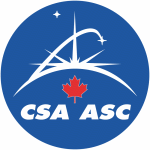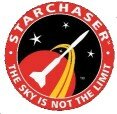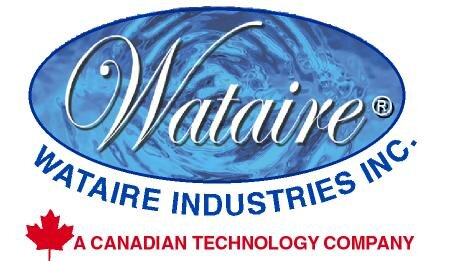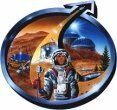









Merchandise
FMARS Sponsors

Objectives & Mission Overview

The crew will be posting daily reports from MDRS, and later from FMARS, on the Internet at https://www.fmars2007.org. Additional material will be posted to that site as mission preparations progress.
Mission Training
"We are about to embark on an extremely challenging, potentially dangerous simulated Mars mission to the Canadian Arctic," said Battler. "In order to achieve crew survival and mission success, it is critical that we anticipate all challenges, and begin to prepare for them. We must train together, bond as a team, and learn to trust each other, starting now."
The training consisted of several phases, and involved all of the supporting groups that will remotely assist the crew in their upcoming mission. The crew received wilderness first aid training, and spent several days working with both the Engineering Team and the Science Advisory Group (SAG), the latter of whom will be directing their scientific work in the Arctic. The most important piece of the training was an entire week spent with the crew in full simulation, with all of the constraints of the Arctic mission in place.
By working with the SAG prior to the actual mission at FMARS, the crew hopes to increase its scientific productivity while on-site in the Artic. The concept, tested on previous Mars Society expeditions, is that crews who train together prior to a mission are able to work together more effectively due to increased familiarity with each other.
The SAG, a team of eleven world-class scientists, has coordinated the orchestration of this complex mission, and supported the selection of the FMARS crew. Its members are:
- Shannon Rupert, New Mexico State University, Principal Investigator
- Chris McKay, NASA Ames, Principal Investigator
- Penny Boston, New Mexico Tech
- Jen Heldmann, NASA Ames
- Adrian Brown, NASA Ames
- Darlene Lim, NASA Ames
- Charlie Cockell, Open University, Milton-Keynes, UK
- Shannon Hinsa, Michigan State University
- Judith Lapierre, Universite du Quebec en Outaouais
- Edward Martinez, New Mexico Highlands University
- Gordon Osinski, Canadian Space Agency
Mission Science Agenda
Relevant field activities include geological surveys, searching for evidence of past life, searching for extant life, and environmental and meteorological observations. In addition, investigating the role and optimal combination of human exploration, telepresence, robotic exploration, and the use of remote sensing tools are all part of these simulations.
The four-month FMARS mission simulation opens up additional focused science opportunities, enabled by the long stay in Arctic conditions. The mission-long scientific focus of the 2007 FMARS crew will be on coupled physical and biological studies of the Arctic active layer over the transition from hard winter freeze to summer thaw.
The season start and end dates have been chosen so that observations will begin when ground temperatures are well below -20 °C. We will study the physics and biology of the transition from minus 20 °C to 0 °C and above.
Important biological and physical processes begin at -20 °C. The eutectic of NaCl is -21.1 °C and at this temperature salt solutions in the Arctic begin to flow [Heldmann et al., 2005]. In addition, laboratory measurements have shown that biological activity begins at temperatures near -20 °C in permafrost [Rivkina et al. 2001] and in sea ice [Junge et al. 2006]. Both biological and physical flow process increase rapidly as the temperature is warmed to 0 °C and above.
Examples of science activities include (but are not limited to):
- Temperature and flow relations in the active layer of the permafrost across -20 to 0 °C and applications to models of fluvial feature formation over permafrost on Earth and Mars.
- Experiments with manipulation of the snow cover thickness and monitoring of the effect on the thaw of the underlying ground.
- Measurement of melt generation in snowpacks and application to models for the melting of dusty snowpacks on Mars as the mechanism for creating gully features.
- Measurement of in situ biological activity and changes in biological diversity and abundance as temperatures increase from -20 to 0 °C.
- Measurement of the release of CH4 - an important greenhouse gas - from permafrost and possible applications to the source of CH4 on Mars.
- Carbon release studies of permafrost as temperature changes, with applicability to global warming.
- Deployment of interactive sensor networks to achieve science goals and human factors studies of the human - sensor network interface.
- Isolation and confinement of this expedition enables research on human performance under extreme conditions analogous to space mission conditions.
- Water utilization study, as water is one of the largest consumable masses on a long duration mission.
Science Project Descriptions
Science References:
Junge, K., H. Eicken, B. Swanson, and J. W. Deming (2006). Bacterial incorporation of leucine into protein down to -20°C with evidence for potential activity in subeutectic saline ice formations (submitted to Cryobiology).
Heldmann, J.L., C.P. McKay, W.H. Pollard, D.T.Andersen, and O.B. Toon (2005) Annual development cycle of an icing deposit and associated perennial spring activity on Axel Heiberg Island, Canadian High Arctic. Arctic, Antarctic, and Alpine Res. 37, 127-135.
Rivkina, E.M., E.I. Friedmann, C.P. McKay, and D.A. Gilichinsky, Metabolic activity of permafrost bacteria below the freezing point, Appl. Environ. Microbio., 66, 3230-3233, 2000.
Zubrin, R., Mars on Earth, Tarcher Penguin, New York, 2003.
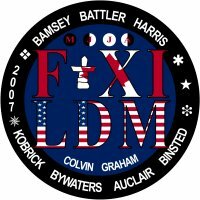
FMARS Index | About | News | Mission Data | Multimedia
Copyright © 2025 www.fmars2007.org & The Mars Society. All rights reserved.
Copyright © 2025 www.fmars2007.org & The Mars Society. All rights reserved.

